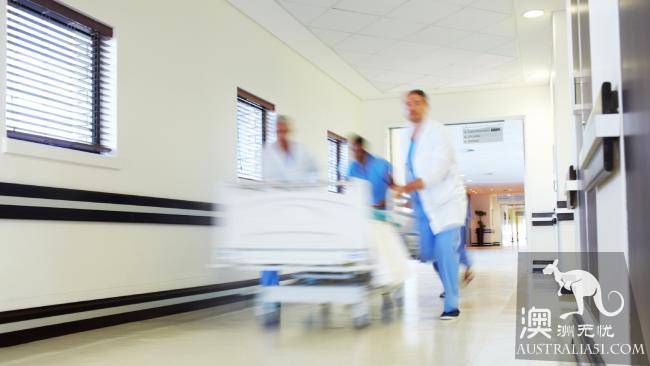
There have been nearly 100 medical accidents in Australia in a year. (photo by Australian News Network)
New reports show that the number of medical accidents in Australia is eye-popping, and it is common for patients to operate wrongly or to get the wrong blood type.
According to News Corp, the Productivity Commission released a report on goverment medical services on Wednesday, which indicated that 82 medical accidents occurred in Australian hospitals during the fiscal year 2015-16. These include cases of "very serious injury" and even death resulting from the operation or the wrong site of the operation for the wrong patient.
According to the report, five incidents were "fatal or severely permanent loss of function involving the wrong patient or body part", compared with only one such serious accident in the previous fiscal year.
In 26 cases, the instrument was found to have remained in the patient after the operation and needed to be removed again. That's an improvement from 35 a year ago.
The report showed that 28 patients committed suicide during hospitalization designed to help or protect them, two fewer than the previous year. There were seven cases of death due to "inappropriate drug regulation" and four cases of death or neurological injury due to intravascular gas embolism.
Other serious accidents include nine maternal deaths during pregnancy or childbirth and seven cases of mistransfusion of blood to patients.
To a little comfort, no such incidents have occurred since 2013-14, when two newborns were given to the wrong family.
The latest figures show that the new state has the largest number of serious medical accidents, with 34 cases, followed by 16 in Victoria, 15 in Kunju, 11 in south Australia, 5 in western Australia and 1 in the capital Territory. However, the productivity commission also pointed out that given the larger population and the number of operations in big cities, the number of medical accidents is also greater.
Federal, state and territorial goverment spent A $96.7 billion on health care in fiscal year 2015, with public hospitals receiving A $61.4 billion, according to the report.
Hospital waiting time varies from place to place
The Productivity Commission's report also published the average waiting time for patients in hospitals across Australia. The waiting time in the emergency department of a new state public hospital is the shortest in Australia, with four to five patients in the target time range.
As far as Australia is concerned, 73 percent of emergency department patients were able to visit within the right time during fiscal year 2016 / 17, compared with 73 percent in Victoria and 81 percent in New York, the only states that have reached or exceeded the national average. The worst performers were the Northern Territory (61%) and the Capital Territory (62%). Western Australia is 64% in South Australia and 65% in Tazhou.
Across Australia, 50 percent of non-emergency patients can wait for surgery within 38 days, compared with 90 percent within 258 days.
The new state has the longest waiting time, with 90% of patients waiting for surgery in 327 days of internal medicine and the shortest in Victoria, 162 days. But the report also warns that because clinical surgery and patient grades are different, comparisons cannot be made simply by numbers.
In terms of patient infection rates, hospital infection rates in the Northern Territory were the highest, followed by the Capital Territory and Tahrena.